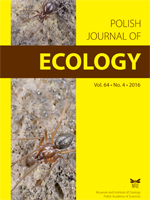The capacity of plants to occupy different habitats is made possible by the plastic responses of their presenting in heterogeneous habitats. Light directly influences the plastic responses of plant architectural traits. We measured five years-old saplings of Chinese cork oak growing in different light intensity habitats (forest edge, forest gap and understory). A suite of architectural and leaf morphological attributes indicated a pronounced ability of Chinese cork oak to adapt to shade. Under low light intensity habitats, Chinese cork oak had a significant tendency to invest more in crown growth, characterized by the highest crown area, the lowest crown length ratio and the largest angle of the inclination of the main stem to the vertical. It expressed marked plagiotropic growth in shade indicating a horizontal light-foraging strategy. In addition, Chinese cork oak significantly exhibited the highest specific leaf area and the lowest total leaf area under low light intensity habitats. In shade, they showed some plasticity in displaying most of their leaf area at the top of the crown to minimize self-shading and to enhance light interception. This differentiation can be defined as a plastic phenomenon, likely related to the higher efficiency of light interception and absorption by saplings.
How to translate text using browser tools
1 December 2016
Plastic Responses in Tree Architecture to Different Light Intensity Habitats: A Case of Chinese Cork Oak
Xiaojing Hu,
Wenhui Zhang,
Jianyun Zhou
ACCESS THE FULL ARTICLE

Polish Journal of Ecology
Vol. 64 • No. 4
December 2016
Vol. 64 • No. 4
December 2016
leaf morphology
Light availability
Quercus variabilis
Tree architecture




